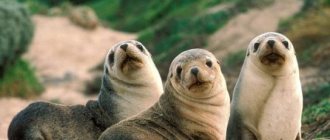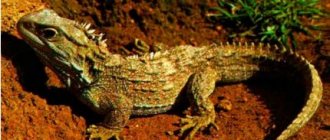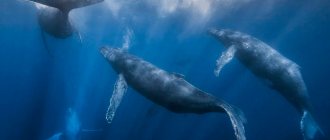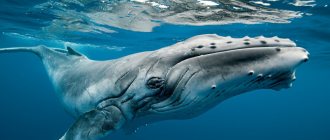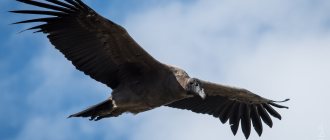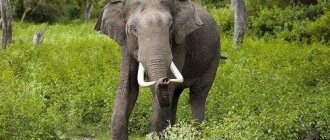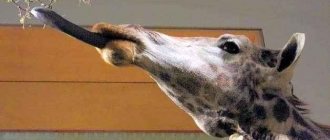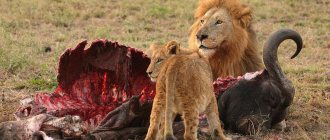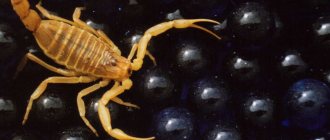Cetaceans are the largest in size of all animals living on the globe. They belong to the order “mammals” and are adapted for life in water. Aquatic mammals include whales, porpoises and dolphins.
The streamlined, teardrop-shaped body shape of cetaceans allows them to move easily and reduces water resistance. Warm-bloodedness is characteristic of the cetacean order. Their lungs are adapted for breathing; the female feeds the cubs with milk. Instead of forelimbs they have flippers, and in the tail there is a fin. Cetaceans have a small amount of hair on their bodies.
Features of cetaceans
In cetaceans, the sense of smell and taste buds are completely atrophied. They are only able to recognize salty foods. Animals' eyesight is also poor. Thanks to the many nerve endings, cetaceans have a well-developed sense of touch.
The inner ear is designed to receive high-frequency sounds and ultrasounds. Animals communicate through sounds perceived by the echolocation organ located in the skull area. Cetaceans lack vocal cords.
Cetaceans can remain underwater for long periods of time without breathing. Offspring are reproduced once every two years.
Reproduction
Most cetaceans reproduce once every 2 years. Pregnancy in different species lasts from 10 to 16 months. The only well-developed cub is born very large (from 1/4 to 1/3 of the mother’s body length). Cetacean births occur underwater. Baby whales are always born with their eyes open, tail (curled into a fist) forward (so as not to choke - childbirth lasts from 5 minutes to 2 hours). The baby performs the first respiratory act at the moment of its first emergence to the surface as an unconditioned reflex, in which the stimulus is the sensation of a change in environment (water - air). The fruit comes out tail first. The baby feeds from 4 months (small dolphins) to 13 (sperm whales), and in captivity even up to 21-23 months (bottlenose dolphins). Whale milk is similar to condensed cream—fatty and rich in protein. The fat content of dolphins' milk is 40-50% (in humans - 2%, in cows - 3-5%), the protein content is 4 times higher than in cow's milk. Milk is consumed in small portions, but very often (dolphins every 15-30 minutes). The cub tightly grasps the nipple with the tip of its mouth, and milk is injected into its mouth under the pressure of special muscles. Externally, the cubs do not differ from their parents, although their dorsal and caudal fins are more flexible and they do not have baleen plates or teeth (which begin to erupt at a few weeks of age). They usually reach a third of the length of their mother. From the first day, the suckling swims very close to the female; this helps him save energy and swim passively, using the pressure of the hydrodynamic field around the parent, who, as it were, tows his baby. The calf grows very quickly and during the lactation period it almost doubles in baleen whales, and in toothed whales by 1/3 of its original size. By the time they switch to self-feeding, some have a sharp increase in baleen, while others are cutting teeth.
Evolution of cetaceans
It is assumed that the ancestors of cetaceans are artiodactyl animals that gradually migrated to the aquatic environment.
More than 56-60 million years have passed since mesonychians existed on Earth. They had hooves, but in appearance they looked like wolves. Mesonychia lived near the Mediterranean Sea and fed on animals living in water and fish. Most of the time the animals were in an aquatic environment, and their body took on a streamlined shape. They developed tails and their front legs became fins. The fur disappeared and subcutaneous fat began to increase. To allow breathing to take place above the water surface, the nostrils moved to the top of the head.
Genetic and molecular studies conducted by scientists have shown the presence of family ties between cetaceans and the extinct artiodactyl Indohyus. They lived in the lands of today's Pakistan. Over the course of 22 million years, the ancestors of cetaceans gradually moved into sea waters. Thus, the ecological niche vacated by extinct mosasaurs and plesiosaurs was filled.
Over time, cetaceans acquired new characteristics and lost contact with the land-based lifestyle. Carefully studied fossil finds in India, Pakistan and the Middle East have made it possible to describe the evolutionary processes that led to the formation of whales. They confirm the origin of cetaceans from mesochynia.
Evolution of whales - video
Cetaceans are aquatic mammals that have greatly deviated, both in structure and in lifestyle, from their terrestrial ancestors. They have reached enormous sizes. In water, the body floats and does not need support.
Marine sediments have been found containing the remains of jugular teeth (primitive whales). Among them were giants with a body length of more than 20 meters.
Whale lifestyle
Cetaceans communicate using echolocation. The layers of fat in the skull act as a sound lens.
Note!
- Removal and cremation of animals
Cynologists - who are they?
Car soundproofing. What is she like?
The whale's movements are slow, but sometimes give way to a big race of up to 40 km/h. They are warm-blooded, but the water temperature is not important; a thick layer of fat is an excellent protection against hypothermia.
The huge volume of the lungs allows animals to be under water for up to 1.5 hours. When it floats to the surface, it releases a tall fountain when it exhales. This is a whole sheaf of condensate, often accompanied by a “pipe hum”.
Small whales live about 25-30 years, and large whales live up to 50 years.
Cetacean body shape
The streamlined, rounded body of cetaceans tapers towards the tail. It resembles a water drop. This allows you to greatly reduce the resistance from the water during movement.
The head is large, it can be round, pointed or elongated in the form of a beak. The head section is practically connected to the body. The neck is generally very shortened, and its interception is practically absent.
In the process of evolution, the forelimbs were transformed into flipper-like fins. They are used by cetaceans to regulate diving depth, turn and brake.
The body in the tail is flatter and more flexible. The tail ends in two caudal blades located horizontally.
Most species of cetaceans have a dorsal fin that acts as a stabilizer during movement. The fins on the back and tail are made of cartilaginous tissue, which gives them elasticity. Swimming speed is regulated by the elasticity of the fins. The fins perform a thermoregulatory role.
There is no hair or ears on the body of cetaceans. Cetaceans have elastic and elastic skin. This helps reduce friction during high-speed swimming.
Order Artiodactyls
Artiodactyla (lat. Artiodactyla) is a paraphyletic order of placental mammals. In these animals, the first toe is reduced, the second and fifth are underdeveloped, and the ends of the third and fourth are covered with a thick horny hoof.
The order contains three modern suborders (numbering about 220 species):
- calloused
[cameliformes], - non-ruminant
, or porciniformes, - ruminants
[horned].
- .
Suborder Callopods [cameliformes]
| Suborder calloused (Tylopoda) includes the Camelids have two-toed limbs with blunt, curved claws. They rest not on the ends of the fingers, but on the totality of their phalanges. There is an elastic callus pad on the heel The most famous are 2 species - Bactrian and |
Suborder of non-ruminant (pig-like)
| Suborder non-ruminant (Suina) includes 4 families (12 species in total):
|
Suborder Ruminant [horned]
| Suborder ruminants (Ruminantia) contains 6 families (about 180 species):
|
Deer family
Habitat
Cetaceans live in the waters of all the oceans of the planet, and some species live in freshwater lakes and river mouths.
Cetaceans also live in the seas. There are whales that prefer coastal areas, and some have chosen the waters of the open ocean. Killer whales can be found in any ocean on the globe. There are cetaceans that live in a certain hemisphere, for example, southern minke whales. There are animals that live only in the Pacific Ocean. You can find whales in estuaries and swamps.
Living conditions depend on the latitude of the ocean and the changing seasons of the year. Many species migrate.
Population and species status
It should be noted that the populations of the cetacean order are declining from year to year, and at a tremendous rate. Many factors contributed to this, such as significant changes in habitat with significant degradation, as well as thoughtless fishing just for the sake of extracting whale oil or whalebone. Today, Gangetic dolphins are so small in number that they are listed in the International Red Book under the status of “Endangered Species”. The total number of Pacific gray whales is only a few hundred individuals, with only two dozen females. February 19 is considered World Whale Day, as on this day in 1986, all commercial whale hunting activities were banned.
Therefore, in our time, any hunting of many species of whales that are on the verge of extinction is prohibited. Such marine inhabitants include the blue whale, bowhead whale, gray and humpback whale. They have suffered quite seriously due to mindless harvesting for fat.
The Red Book of Russia includes such species of whales as the small killer whale, 3 species of dolphins, the Black Sea bottlenose dolphin, the porpoise, the narwhal, as well as many species of the cetacean order. In fact, listing many animals in the Red Books does not in any way guarantee their protection from complete extinction.
Benefits for the ecosystem
The most important role of whales in nature is the global processing of nutrients. This animal acts not only as a predator for fish and prey for aggressive killer whales. The whole point is that cetaceans contribute to the development of the plankton population. Scientists call this effect the “whale pump.” Its meaning is that humpback whales, sperm whales and similar mammals hunt at depth, and closer to the water surface they excrete waste and thereby create a nutritious environment for the inhabitants of the upper water layer. Whales are also considered to transport nutrients over long distances.
Even after death, these animals do not cease to influence the biosphere. Dead whale carcasses, sinking to the bottom, become a reservoir for carbon dioxide and a unique ecosystem for many organisms. Thus, dead whale carcasses become a habitat and source of food for other animals.
Nutrition
During the warm period, whales consume a lot of food and, as a result, accumulate a large layer of fat. When food is scarce, subcutaneous fat allows them to survive difficult times.
During the mating season, some whales refuse food altogether.
Depending on the type of animal, food is:
- plankton;
- cephalopods;
- live fish;
- decomposed organic matter.
Only the killer whale can choose other animals as objects of hunting; it feeds not only on fish.
Cetaceans digest their prey by swallowing it whole. The sperm whale swallows small stones to grind food.
